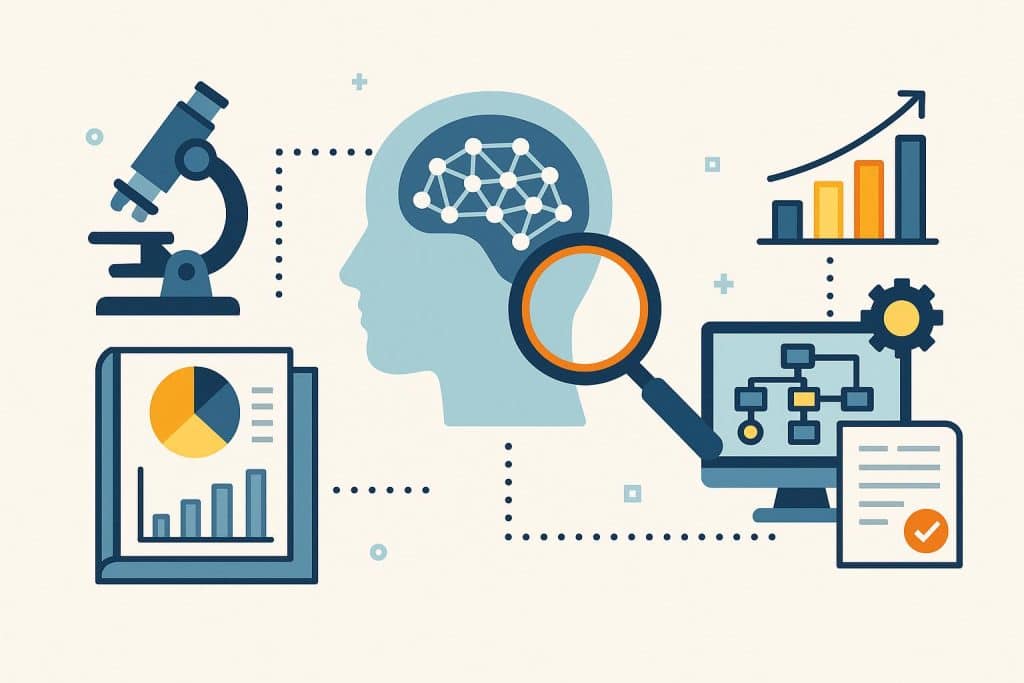Introduction
Recruiting has quietly become a data problem. Modern hiring teams aren’t struggling to find candidates—they’re drowning in profiles, applications, and duplicate résumés. The real challenge is filtering proof of ability from noise.
That’s why a new generation of AI sourcing software is changing how recruiters work. Instead of scanning job boards or LinkedIn, these systems crawl code repositories, research databases, and professional networks to identify talent that traditional tools never surface.
Platforms like Wrangle combine research intelligence, machine learning, and workflow automation to locate contributors who are already advancing their fields—long before they start job-hunting.
1. Why Traditional Recruiting Tools Fall Short
Applicant Tracking Systems (ATS) and résumé parsers were built for a world where experience could be summarized in bullet points. But modern technical talent—engineers, data scientists, designers—leave their real footprints elsewhere.
A résumé tells you what someone says they’ve done. Their GitHub, academic papers, or open-source projects show how they actually think.
Legacy systems miss that signal because they:
- Prioritize keyword matches over actual outcomes.
- Ignore community contributions and collaborative projects.
- Reinforce bias by favoring certain degrees or phrasing.
Recruiters end up filtering out the very innovators who build the technology everyone else lists on their CVs.
2. The Architecture of an AI Sourcing Stack
The modern sourcing stack goes beyond keyword search. It’s built on four key layers:
- Data Ingestion: Continuous collection from GitHub, arXiv, Google Scholar, product changelogs, and tech blogs.
- Identity Resolution: Linking separate identities—like “A. Patel” on research papers and “apatel-dev” on GitHub—through graph-based matching.
- Signal Weighting: Ranking each contribution by relevance, recency, and conceptual difficulty.
- Insight Delivery: Turning raw activity into human-readable insights for recruiters and hiring managers.
The result: recruiters can ask questions such as,
“Who has worked on reinforcement learning benchmarks and published in 2024?”
That query, once impossible in a résumé filter, now takes seconds.
3. How Wrangle Turns Research Into Recruiting Intelligence
Wrangle’s sourcing system applies natural-language understanding and metadata enrichment to analyze how candidates think, not just what they claim.
Each candidate profile becomes a living knowledge graph:
- GitHub data reveals depth of problem-solving and collaboration.
- Research output indicates reasoning patterns and innovation.
- Community engagement reflects communication and influence.
This combination creates a “Cognitive Fit Index,” a contextual measure of how a person’s proven work aligns with a company’s specific needs.
For a deeper technical look, see Wrangle’s AI candidate evaluation research insights, which break down how Wrangle scores and validates public contributions across disciplines.
4. Practical Use Cases for Recruiters
AI sourcing tools are already changing how leading organizations find and assess talent:
- Early discovery: Identify rising contributors before competitors.
- Skill verification: Cross-check listed skills with real projects and code quality.
- Candidate mapping: Build network graphs to visualize talent clusters by expertise.
- Bias reduction: Evaluate based on verifiable performance data, not résumé wording.
Recruiters no longer “screen” applicants—they discover experts.
5. Human-in-the-Loop Recruiting
Even with automation, the best results happen when human intuition stays in the loop. Recruiters review candidates surfaced by AI, understand why they were recommended, and make final decisions.
Wrangle’s system explains its reasoning:
“This candidate’s open-source work on graph neural networks aligns with your machine-learning infrastructure role.”
Transparent, evidence-based AI helps hiring teams make faster, fairer, and more confident choices.
6. Compliance, Security, and Data Ethics
As sourcing becomes more data-driven, compliance is non-negotiable. Enterprise-ready AI sourcing platforms adhere to GDPR, SOC 2, and ISO 27001 standards.
Wrangle allows isolated data ingestion pipelines, ensuring sensitive information never leaves your company’s environment. Every enrichment step is traceable and auditable.
7. The Business Case: Better Hires, Less Noise
AI sourcing software doesn’t just find more candidates—it finds the right ones.
Metric | Legacy Recruiting | AI-Driven Sourcing |
Time-to-fill | 45+ days | < 20 days |
Candidate quality | Self-reported | Verified contributions |
Recruiter workload | Manual search | Automated enrichment |
Cost-per-hire | Rising | Decreasing |
When recruiters start from evidence instead of claims, efficiency and diversity both improve.
FAQs
What is AI sourcing software?
AI sourcing software automates the process of identifying and evaluating candidates by analyzing verifiable data such as code commits, research publications, and community activity.
How does it differ from recruiting automation?
Recruiting automation handles repetitive tasks like scheduling or follow-ups. AI sourcing focuses on candidate discovery and evaluation.
Does Wrangle replace human recruiters?
No. It augments them—surfacing better candidates faster and explaining its reasoning transparently.
Is it compliant with data privacy laws?
Yes. Wrangle follows strict enterprise security and data-handling standards, giving companies full control over data flow.
Conclusion
Recruiting is shifting from keyword filters to evidence-based discovery. The companies that adopt intelligent sourcing early will identify rare talent before the rest of the market catches up.
By blending AI research, graph learning, and transparent reasoning, Wrangle and other AI sourcing platforms are setting a new standard: hire based on proof, not promises.
